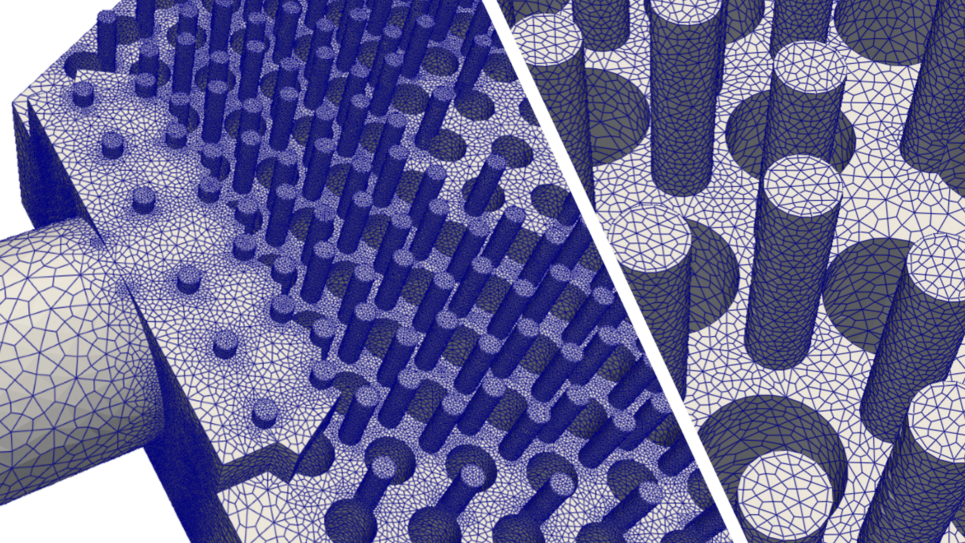
Computational grid of the HTTF lower plenum.
This team will everage data generated with high-fidelity CFD simulations to inform fast-running model development for design tools, aiding in the deployment of carbon-free energy on a commercial scale.
Computational Fluid Dynamics (CFD) is playing increasingly important role in the design process of next-generation nuclear reactors. With the dawn of the Exascale computing era, full-core high-fidelity CFD simulations are now a reality. This offers unprecedented insight into complex flow and heat transfer behavior expected in many of the proposed designs. By leveraging high-fidelity simulations, we can generate more accurate models and implement them in the low-fidelity, fast-running design tools in use by the industry. This hi-2-lo concept is a driving force behind the DOE’s ongoing Advanced Reactor Demonstration Program (ARDP) and is a key effort of the DOE’s Nuclear Energy Advanced Modeling and Simulation (NEAMS) program. This project proposes to leverage data generated with high-fidelity CFD simulations to inform fast-running model development for design tools, aiding in the deployment of carbon-free energy on a commercial scale. It will consist of three primary components: ongoing support for the ARDP program, support for hi-2-lo efforts in NEAMS, and ongoing support for a safety validation benchmark with the U.S. Nuclear Regulatory Commission (NRC). All proposed simulations will use the spectral element code NekRS, which has a long history of development in the DOE NEAMS program and use on DOE leadership computing facilities.
ARDP demonstration projects are expected to yield a fully functional advanced nuclear reactor within 7 years. Simulations performed for both pebble beds and wire-wrapped fuel will enrich the available experimental data by evaluating the applicability of correlations – many of which were not directly intended for the design conditions. Simulations will further extend the knowledgebase by considering moderate flow rates in both designs, where natural circulation plays a significant role in heat transfer. This will fill an important gap that must be addressed.
To support validation of hi-2-lo efforts, a series of experiments have been recently conducted as part of an OECD/NEA international benchmark with an integral effect test facility for a High-Temperature Gas-cooled Reactor (HTGR). High-fidelity CFD simulations would enrich the available experimental data and provide valuable insights to the thermal fluid phenomena in a HTGR system.
Following the events of Fukushima Daiichi, A particular focus for nuclear reactor safety has been in hydrogen mitigation. In collaboration with the NRC, simulations will be performed of a large, complex stratification layer benchmark to provide validation for this phenomenon. This problem is a long-running transient and represents a major challenge in computing. The recent switch to NekRS on GPUs has yielded significant speed up, allowing for improvements in the scope of what can be simulated. This aspect of the project has the potential to enhance safety of currently operating reactors and continue broadening access to leadership computing.